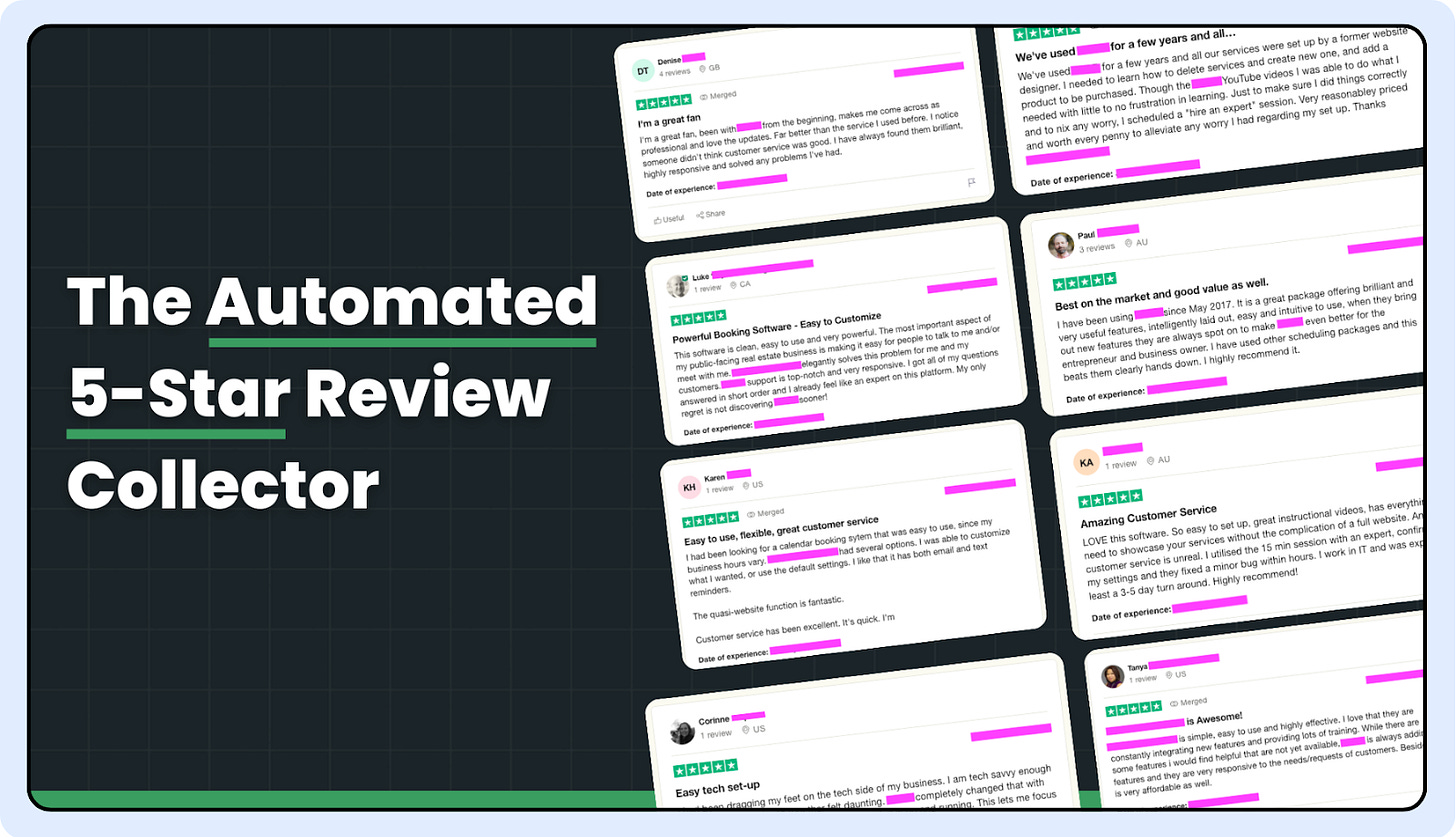How Tally Turned AI into Their Top Acquisition Source: 8 Steps from Marie Martens
Written in partnership with Marie Martens, CEO and co-founder at Tally.so
More and more, people are turning to AI search tools like ChatGPT for solutions and recommendations, making it a challenge for SaaS tools still relying on traditional search methods to drive growth and generate leads.
So after seeing a LinkedIn post by Marie Martens, co-founder of Tally—a free, powerful form builder used by over 200,000 businesses—I reached out. In her post, Marie shared how AI search results had recently become Tally’s largest acquisition:
I interviewed her to find out exactly what steps SaaS tools can take to better rank in AI search results.
Note: Don’t worry about taking notes. I’ve placed a handy checklist for you at the end with each action to take for you to implement for your SaaS.
1. Build a social listening strategy
Tally’s rise in AI search visibility wasn’t part of a targeted strategy, but rather the outcome of years spent actively engaging in online communities. Marie and her co-founder initially promoted Tally themselves in relevant forums like Reddit and Product Hunt, and over time, users began recommending the tool on their own.
These organic mentions built a strong digital footprint across tech spaces, which AI tools like ChatGPT later picked up on when surfacing live web data. To maintain this momentum, the team uses Octolens to track brand and competitor mentions, routing alerts into Slack and Missive for daily review.
“What the social media manager does is just checks every ticket. But we don't interact with every mention. It needs to be relevant. We don't want to get banned on Reddit for pitching Tally everywhere.” - Marie
Your turn:
👉 Post weekly in niche communities where your product fits to build trust and train AI tools. Use Octolens to track brand and competitor mentions, send alerts to Slack, and use them to engage in relevant Reddit threads or social posts.
👉 Prioritize being helpful over promotional.
2. Align your SEO with prompts that AI might surface
Tally didn’t have an aggressive SEO strategy, but certain landing pages ranked well organically—most notably their free Typeform alternative page.
“One, for example, is our free Typeform alternative. And that's also one of the prompts where you obviously see we are mentioned more.” - Marie
These SEO pages were showing up in AI-generated recommendations, suggesting a strong overlap between traditional SEO visibility and AI prompts.
However, Marie also noted where Tally was absent—such as in broad queries like "best form builders" or in ultra-specific use cases (e.g., forms for vet practices), where larger players with extensive SEO libraries dominate.
It appears that AI search mirrors the gaps and strengths of their existing SEO footprint. If you’re strong in organic search for a given term, you’re more likely to show up in AI conversations around it.
Your turn:
👉 Use your SEO keyword research to also inform which AI prompts you may or may not be showing up in. Map both.
3. Build a simple system for spotting content gaps
Tally’s approach to identifying content gaps is straightforward: they maintain a Notion database of articles and resources where Tally should be mentioned but isn’t. These might be blog posts, listicles, or comparison pieces that frequently get cited by AI. The first step was building the list; the next is figuring out how to get added to those articles.
As a fractional CMO, I get tons of backlink requests everyday in my inbox. Nearly all get ignored.
There’s no value for me to link to other brands in our articles.
Rather than requesting a backlink, I suggest offering to write full-length pieces that include a couple of links to your product.
This creates a win-win scenario—the brand gets a new article to publish, and you get a backlink and exposure.
Your turn:
👉 Create a Notion doc or spreadsheet listing every article your competitors are mentioned in but you aren’t. Start with five.
👉 Next, reach out and offer to write an article for each source to generate backlinks for your product.
4. Use tools to track your AI search visibility
Tally uses Rankshift and another called GPTtrends to assess AI visibility. These tools allow the user to input prompts and see where their product ranks or whether it appears at all.
“You basically enter prompts, and then you can see your visibility ranking or percentage, and you can compare with competitors as well. You need to come up with the prompts yourself and just try to enter as many as possible and then see where you come up and where you don't.” - Marie
The tools often show not only the answers surfaced by AI but also the sources cited. This has helped Tally better understand where they’re missing out and what kinds of content (like blog posts or reviews) are being favored.
Your turn:
👉 Use Rankshift or GP Trends to test prompts that should include your product. Analyze where you rank and what sources AI cites.
5. Leverage social proof from review platforms
Marie mentioned that platforms like G2 and Product Hunt, where Tally was featured and reviewed, contributed to its rise in AI search rankings. Reviews, especially from third-party platforms, played an important role in building visibility.
If you’re interested in automating authentic 5-star reviews from your real customers, check out my guide here to set it up for free with Tally.
>> How to automatically collect authentic 5-star reviews for your SaaS
Your turn:
👉 Add a subtle CTA in your customer success communications that asks happy customers to leave reviews.
👉 Automate authentic 5-star review collection using my free guide.
6. Create comparison and product-led content
Tally’s comparison pages, especially “Tally vs Typeform,” were key contributors to their success in AI search results. These pages were well-researched, human-written, and more in-depth than automated, generic content.
“We try not to just have a generic landing page where just everything is automatically generated, but is actually written by a person, and we've actually tried the tools. We didn't even write it ourselves. We asked someone else because obviously we're biased.” - Marie
Your turn:
👉 Create high-quality comparison pages and product-led content that is genuinely helpful to users. Avoid automatically generated content.
7. Track when AI becomes your acquisition source
Tally first noticed AI-driven traffic when users began self-reporting ChatGPT as their discovery source in onboarding surveys. This led the team to track AI referrals more closely. By April–May 2025, ChatGPT had become a major traffic source, with up to 8,000 weekly users citing it—far more than traditional analytics showed.
“It took a while for us to realize it, but it was since the beginning of 2025, especially April and May, that it just started skyrocketing. It was not just a small additional channel, but started taking over other channels.” - Marie
Your turn:
👉 Ask new users how they found you—include AI tools like ChatGPT as an option. Track referral sources to measure AI-driven traffic and watch for growth in users selecting AI as their discovery channel.
8. Monitor spikes with AI-rollouts
Marie doesn’t attribute the spike in Tally’s AI-driven traffic to a sudden improvement in their ranking. Instead, she believes the shift coincided with ChatGPT enabling its web browsing feature by default.
Around the same time that browsing became standard, Tally began seeing more consistent, substantial AI-driven discovery which was a consistent pattern echoed across other niche SaaS tools.
The timing suggested that when ChatGPT began pulling live data from the web, tools like Tally—which were already mentioned in Reddit threads, blog posts, and forums—started being surfaced more prominently.
Marie doesn’t believe there was a single viral moment that caused the jump but rather a convergence of growing popularity of ChatGPT itself and a shift in how it sourced data.
Your turn:
👉 Add a tracking system to your acquisition channels to measure the impact of AI tools on user signups, so you know which acquisition channels to double-down on growing.
Tally’s Toolbox 🧰
These are the tools Marie and her team use to execute their AI search results strategy:
Used to track own brand mentions and relevant keywords to identify conversations and communities where Tally could be a solution. The mentions are pushed to a Slack channel, making it easier to track and respond.
Rankshift is used by Tally to monitor their AI visibility and identify where they are or aren’t appearing in AI-generated search results. The tool helps them track their visibility for different prompts and compare it with competitors.
Used alongside Rankshift for tracking Tally’s performance in AI search results. This helps monitor visibility ranking and allows Tally to see the sources that are referenced in AI answers.
Mentions of Tally from social listening tools like Octolence are sent to Missive’s shared email inbox, where the social media manager checks and replies to those mentions where appropriate.
Tying it all together
Ranking in AI search is still a new and evolving space—no one has all the answers, and anyone promising guaranteed results should be met with skepticism. It's uncharted territory, and most of us are learning as we go.
What’s clear from Marie’s success with Tally is that ranking well comes from a mix of organic growth, helpful content, active community engagement, and consistent social listening.
Your to-do list 👇
Social listening: Post weekly in niche communities where your product fits to build trust and train AI tools. Use Octolens to track brand and competitor mentions, send alerts to Slack, and use them to engage in relevant Reddit threads or social posts. Prioritize being helpful over promotional.
SEO: Conduct SEO research to understand which AI prompts you may or may not be showing up in.
Competitor mentions: Create a spreadsheet listing every article your competitors are mentioned in but you aren’t, then reach out to the authors to get yourself included in the article, or offer to write a new article for them in which you backlink to your product
Test prompts: Use Rankshift or GPTtrends to test prompts that should include your product. Analyze where you rank and what sources AI cites.
Get reviews: Add a subtle CTA in your customer success communications that asks happy customers to leave reviews and/or automate 5-star review collection using my free process.
Comparison pages: Create high-quality comparison pages and product-led content that is genuinely helpful to users. Avoid automatically generated content.
Ask: Ask new users how they found you—include AI tools like ChatGPT as an option. Track referral sources to measure AI-driven traffic and watch for growth in users selecting AI as their discovery channel.
Track: Regularly monitor how much traffic and new signups are coming from AI search tools. Add a tracking system to your acquisition channels to measure the impact of AI tools on user signups, so you can adjust and optimize your efforts accordingly.













